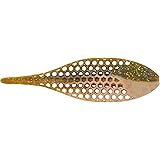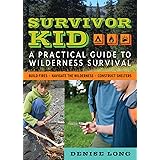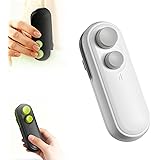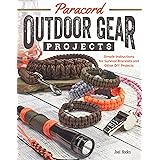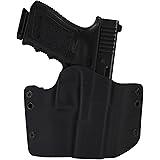The concept of navigating medical emergencies when modern healthcare infrastructure is unavailable presents a formidable challenge. Dr. Bones, in the video above, eloquently highlights the crucial distinction between typical outdoor medicine and the profound demands of long-term survival medicine. While a wilderness first aid scenario focuses on stabilizing a patient for rapid transfer to a professional facility, a true long-term survival situation necessitates a complete paradigm shift; you become the highest medical resource available.
This reality requires an entirely different approach to medical preparedness, moving beyond basic first aid to encompass comprehensive self-reliance. You must accept that the patient’s recovery or decline often rests solely on your knowledge and capabilities. The preparedness community, adept at stockpiling essentials like “beans and bullets,” frequently overlooks the indispensable “third B”: bandages and extensive medical supplies.
Understanding Long-Term Survival Medicine: Beyond Basic First Aid
Traditional emergency medical protocols operate under the assumption that advanced care is merely hours, if not minutes, away. Paramedics stabilize, emergency rooms diagnose, and surgeons repair, all supported by a complex web of technology, pharmaceuticals, and specialized personnel. However, imagine if this entire system ceased to function.
In such an austere medical environment, the goal transitions from immediate transfer to sustained care within your capabilities. This fundamental shift requires not only a robust inventory of supplies but also a significant upgrade in medical knowledge and practical skills. You must transform from a basic responder into an autonomous medical provider.
The Critical Shift: From Responder to Primary Care Provider
Becoming the “end of the line” means taking on an extraordinary level of responsibility. This role demands an understanding of everything from acute trauma management to chronic disease management, all without the luxuries of modern diagnostics or sterile operating theaters. You will be responsible for assessment, treatment planning, execution, and long-term recovery support.
Consider the psychological burden of making life-or-death decisions with limited resources. You must develop a diagnostic mindset, relying on keen observation and foundational medical knowledge rather than imaging or lab tests. Furthermore, the practical application of treatments requires dexterity and confidence, often in less-than-ideal conditions.
Navigating Austere Medical Environments: Challenges and Realities
An austere medical environment defines any setting where conventional medical support is either absent, severely limited, or inaccessible. This could stem from natural disasters, societal collapse, or remote wilderness excursions. Such scenarios fundamentally alter how medical care is administered and conceived.
The core challenges include severe supply limitations, the inherent difficulties of the environment itself, and the complete absence of high-tech diagnostic or treatment tools. Each of these factors compounds the others, demanding extreme resourcefulness and a deep understanding of practical medicine.
Resource Scarcity: Making Every Item Count
Limited medical supplies mean every bandage, every antibiotic, and every pain reliever becomes incredibly precious. This scarcity forces a reconsideration of typical medical waste and single-use items. Sterilization and reuse, though challenging, become essential practices for consumables like gauze or even basic instruments.
Imagine needing to manage a severe burn with minimal dressings or facing a serious infection without broad-spectrum antibiotics. Proactive planning for diverse medical needs, including trauma, infection, chronic conditions, and even dental emergencies, becomes paramount. Furthermore, understanding the pharmacology of your stored medications, including their shelf life and proper storage, is critical.
The Low-Tech Reality: Adapting to Primitive Conditions
The absence of high technology drastically alters diagnosis and treatment. Forget X-rays, MRIs, blood tests, or even reliable electricity for basic medical equipment. Diagnosis relies purely on clinical signs, symptoms, and a thorough physical examination. This necessitates a strong foundation in physical assessment skills.
Moreover, performing medical procedures in a non-sterile, low-tech environment significantly increases the risk of complications, especially infections. Maintaining basic hygiene, wound care protocols, and effective sanitation become even more critical than in a modern hospital setting. Simple tools and ingenuity must replace sophisticated machinery.
The “Third B”: Essential Medical Supplies for Long-Term Scenarios
Dr. Bones correctly emphasizes that while preppers are excellent at gathering food and defensive items, medical supplies are often underestimated in quantity and scope. You must consider not just your immediate family, but also potential community members or individuals seeking help at your doorstep. A family of four’s needs could easily expand to eight or ten people in a widespread crisis.
Beyond personal use, a surplus of medical supplies also serves as an invaluable barter item in a post-collapse economy. Items like antibiotics, pain relievers, and wound care dressings will be highly sought after. Therefore, strategic stockpiling means acquiring much more than you initially anticipate needing for your core group.
Beyond Band-Aids: Comprehensive Medical Kits
A true long-term survival medical kit goes far beyond a basic first aid box. It encompasses a wide array of categories, each crucial for different scenarios. Consider the following essential components:
-
Trauma Management: Hemostatic agents (e.g., QuikClot), Israeli bandages, chest seals, tourniquets, various sizes of sterile gauze, adhesive bandages, medical tape, splinting materials (SAM splints), burn dressings.
-
Infection Control: A range of antibiotics (prescription and ideally broad-spectrum, considering legality and shelf life), antiseptic wipes, iodine, hydrogen peroxide, sterile gloves, wound irrigation syringes.
-
Pain & Inflammation: OTC analgesics (ibuprofen, acetaminophen, aspirin), stronger prescription pain medication (if legally acquired and safely stored), anti-inflammatories, antihistamines for allergic reactions.
-
Chronic Conditions: Sufficient quantities of prescription medications for any family members (e.g., insulin, heart medication, blood pressure meds) plus knowledge of how to manage these conditions with limited resources.
-
Basic Diagnostics & Tools: Stethoscope, blood pressure cuff, thermometer, pulse oximeter, penlight, dissecting kit (scalpels, forceps, hemostats), suture kits, dental extraction tools, magnifying glass, headlamp.
-
Hygiene & Sanitation: Soap, hand sanitizer, water purification tablets/filters, menstrual hygiene products, waste disposal bags, cleaning supplies, basic dental hygiene tools (toothbrushes, toothpaste, dental floss).
-
Alternative & Herbal Remedies: Information and supplies for medicinal herbs known for antiseptic, anti-inflammatory, or pain-relieving properties, assuming proper identification and usage knowledge.
Strategic Stockpiling: Barter and Community Care
When planning your medical cache, envision not just a short-term crisis but an extended period where resupply is impossible. This necessitates buying in bulk and having redundant systems. Imagine if one bag of supplies is lost or compromised; another must be readily available.
The potential for bartering medical supplies is also immense. A surplus of antibiotics or sterile dressings could become as valuable as food or ammunition in a dire situation. This reality further justifies investing heavily in medical preparedness, ensuring you have enough for your own security and potentially for trade.
Cultivating Knowledge and Skills for Self-Reliance
Supplies are only as useful as the knowledge of how to apply them. The “uncertain times” Dr. Bones refers to present a critical “opportunity to learn new skills.” This includes both modern first aid techniques adapted for austere environments and “old skills” that our great-grandparents might have possessed, like growing food or utilizing natural remedies.
Your medical knowledge must evolve beyond basic CPR or bandaging. It needs to encompass comprehensive assessment, diagnosis, and treatment planning in the absence of advanced medical infrastructure. This journey involves continuous learning and practical application.
Practical Medical Skills for the Survivalist
Developing a robust skill set is non-negotiable for effective long-term survival medicine. Consider focusing on these crucial areas:
-
Advanced Wound Management: Cleaning, debriding, suturing, stapling, infection prevention, managing various types of burns, and dealing with deep lacerations.
-
Infection Control & Antibiotic Use: Understanding different classes of antibiotics, their appropriate use, dosage, potential side effects, and strict adherence to hygiene to prevent nosocomial infections.
-
Basic Surgical Procedures: Managing abscesses, foreign body removal, simple fracture reduction, and improvisation techniques for splinting and traction.
-
Pharmacology & Drug Administration: Knowledge of common medications, their uses, contraindications, routes of administration, and safe storage practices, especially for expired drugs.
-
Diagnostic Acuity: Sharpening observation skills, understanding vital signs, recognizing patterns of illness, and performing thorough physical examinations without technological aids.
-
Dental Emergencies: Pain management for toothaches, temporary fillings, and safe extraction techniques for severely infected or damaged teeth.
-
Public Health & Sanitation: Implementing vector control, ensuring clean water and food, proper waste disposal, and preventing the spread of communicable diseases within your group.
-
Psychological First Aid: Recognizing and managing anxiety, depression, and trauma responses in a high-stress environment, crucial for group cohesion and individual well-being.
Holistic Preparedness: Integrating Traditional and Modern Wisdom
True self-reliance in medicine involves blending the best of modern understanding with forgotten traditional wisdom. This includes understanding herbal remedies and their appropriate applications, alongside knowledge of anatomy, physiology, and modern aseptic techniques. Education from sources like Dr. Bones’ work and practical, hands-on training are invaluable.
Keep detailed medical guides, textbooks, and personal notes on various conditions and treatments. These resources become your “medical library” when the internet is down. Continued learning, regular practice, and building a community of like-minded individuals who share medical knowledge will significantly enhance your preparedness for any scenario requiring advanced long-term survival medicine.



